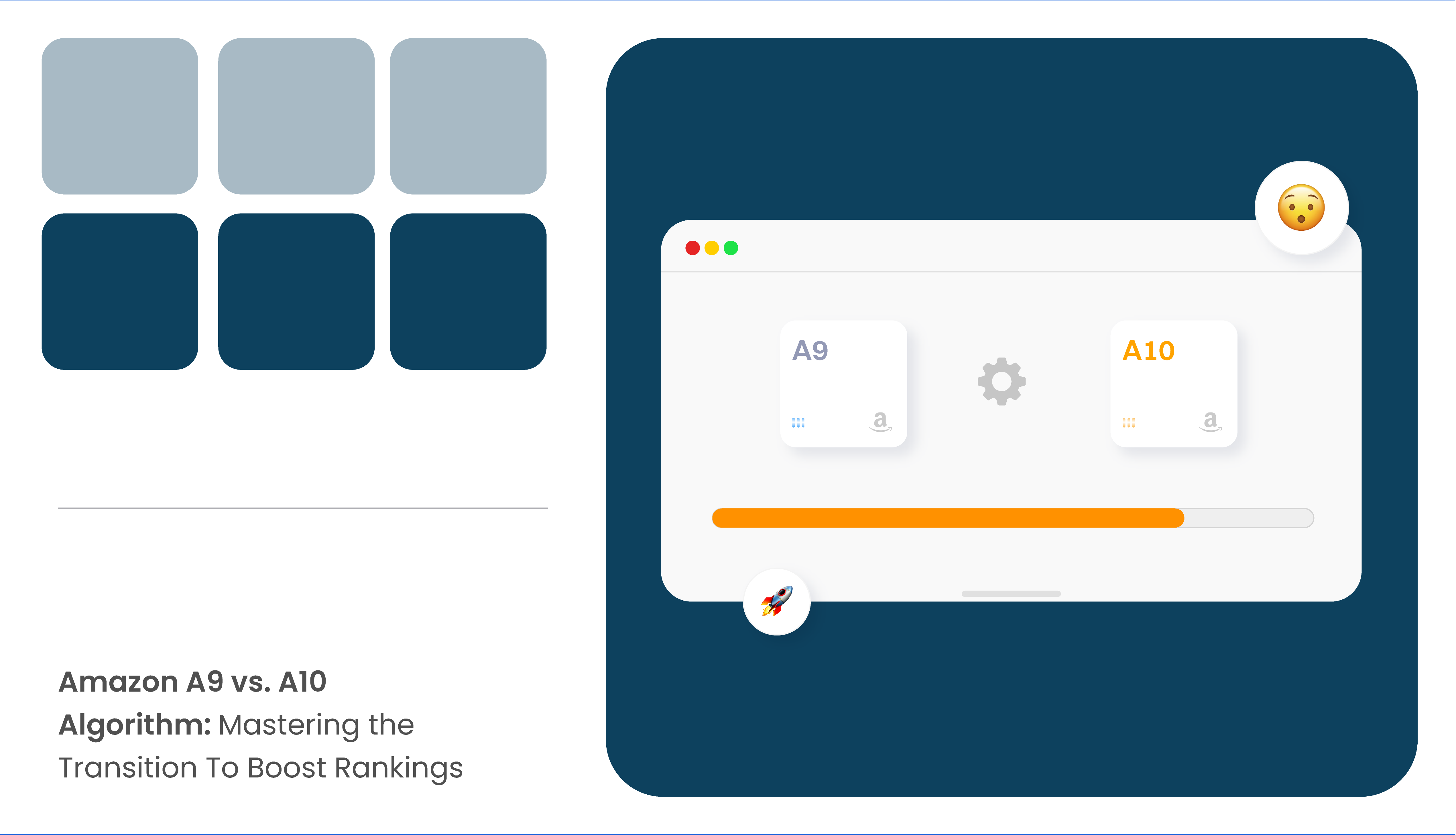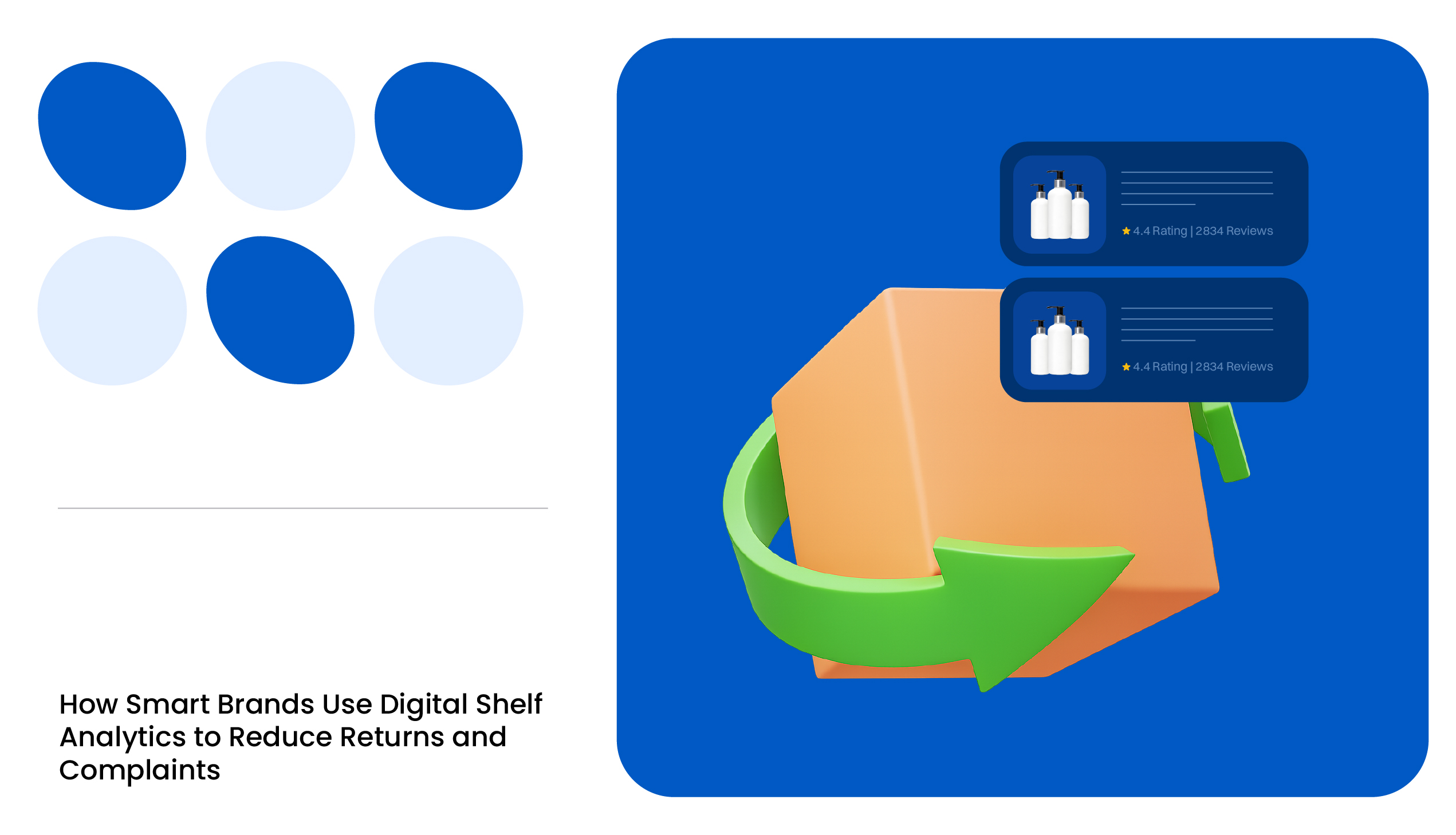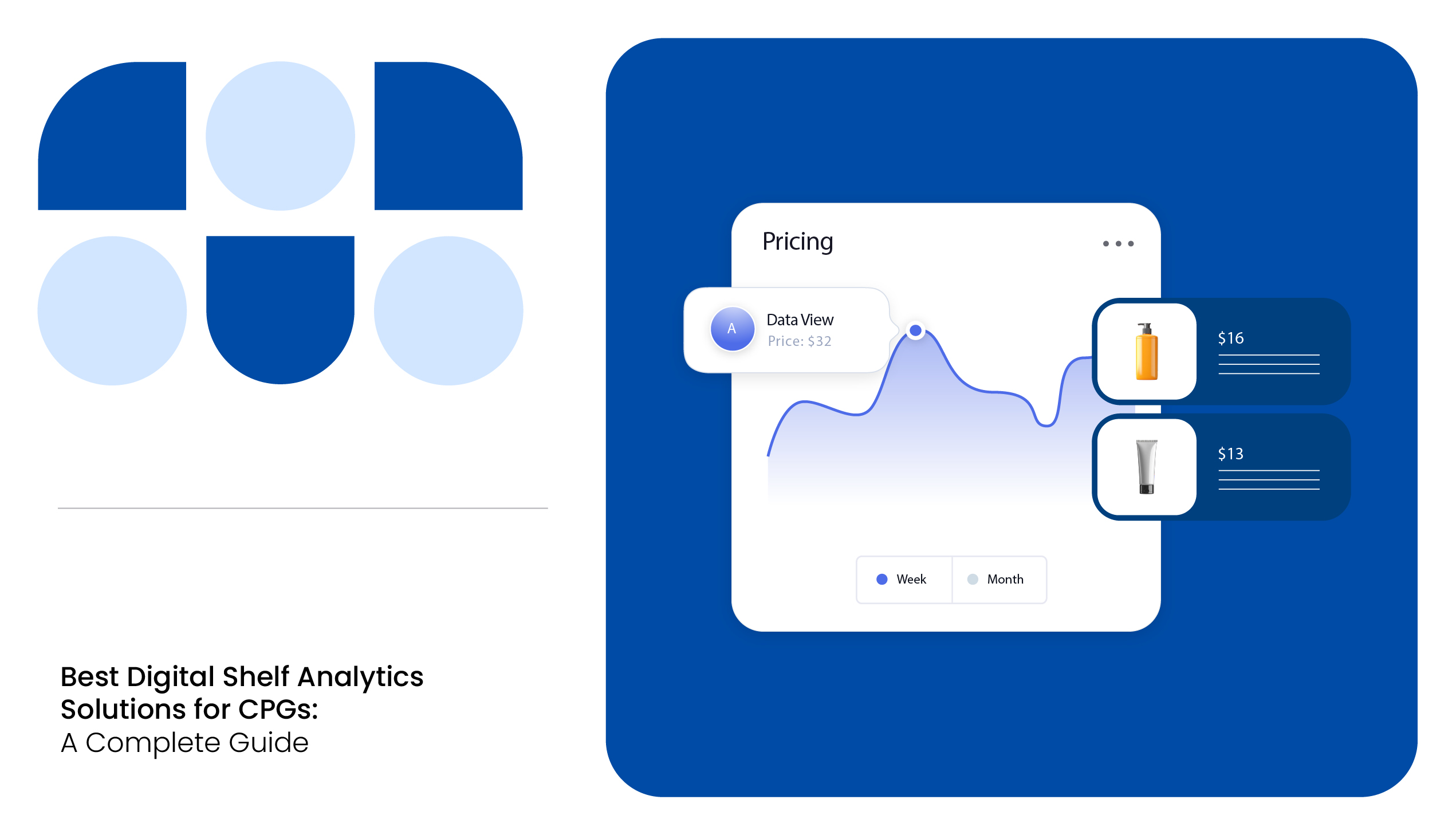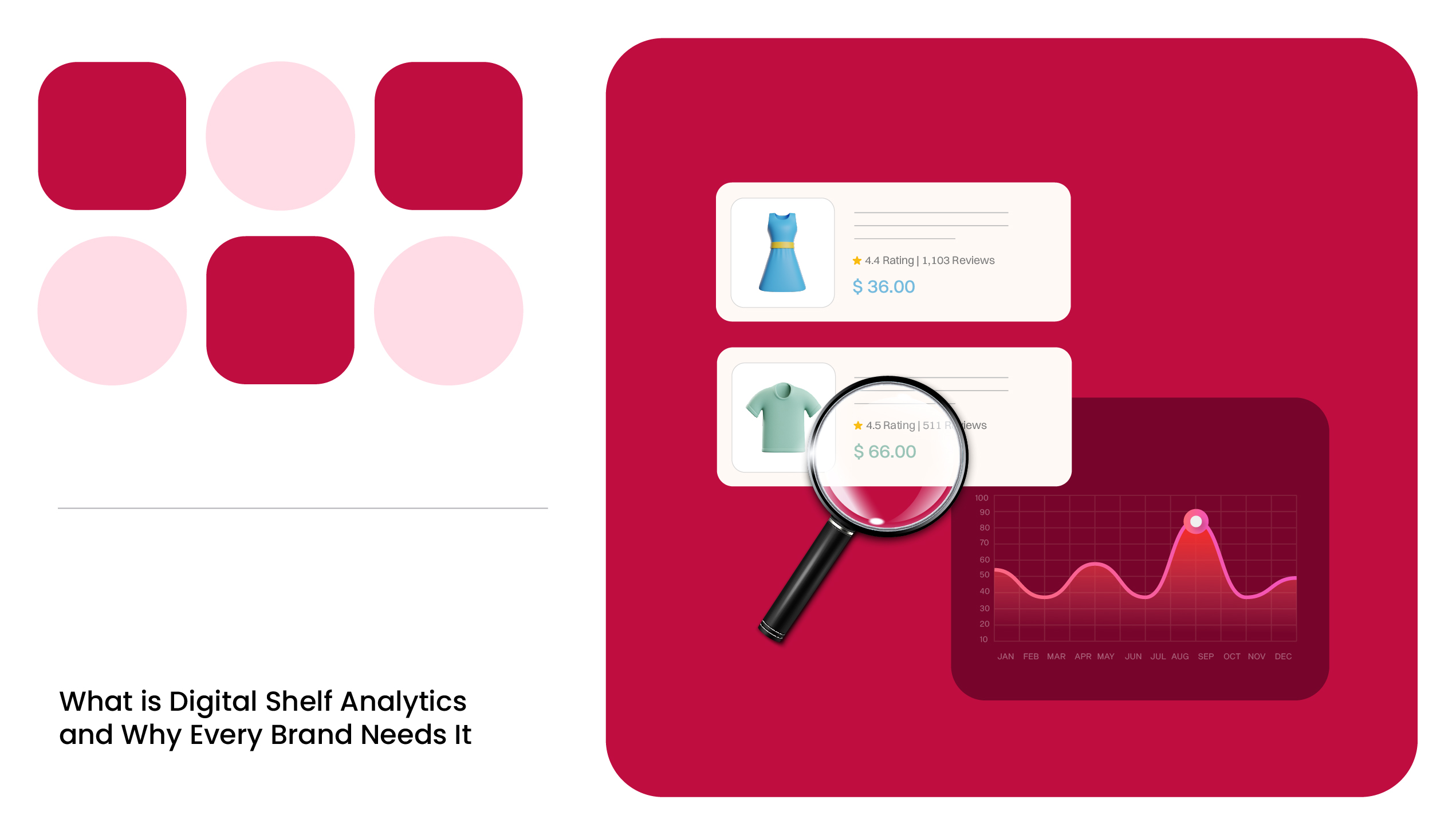As an e-commerce professional, if you’ve been scratching your head, wondering why your products aren’t popping up on Amazon like they used to, it’s time to talk about the significant shift from Amazon A9 algorithm to the A10 algorithm.
Yes, the game has changed, and if you’re still playing by the old rules, you might be missing out on sales.
In this blog, we’re diving into differences between Amazon A10 and A9 algorithms, breaking them down into simple terms. Whether you’re a brand manager, a new seller, or someone who’s been in the game for years, understanding these changes is the key to staying competitive and dominating the digital shelf.
A digital shelf optimization tool like MetricsCart is the perfect addition for your brand to monitor your brand performance and product listings on major online platforms like Amazon, Walmart, etc.
READ MORE | Want to know more about the Amazon A10 algorithms? Check out our blog on Amazon A10 Algorithm Demystified: How Your Brand Can Dominate the Digital Shelf
Transition to the Amazon A10 Algorithm
Amazon’s A10 algorithm isn’t just an update; it’s a whole new approach to how products are ranked. According to Amazon CEO Jeff Bezos, “We’re not competitor obsessed, we’re customer obsessed. We start with what the customer needs and we work backwards.”
Amazon A10 algorithm takes a deeper dive into the customer journey. It’s no longer just about keywords and sales. Now, Amazon is looking at things like how customers engage with your product page, whether your product is driving external traffic, and even how trustworthy you are as a seller.
Some of the main Highlights of the A10 algorithm are:
Customer-Centric Search Results
A10 is designed to match better what shoppers are looking for. Instead of just focusing on keywords, the algorithm now prioritizes listings that align with a customer’s intent.
For example, if someone searches for “ergonomic office chair,” A10 isn’t just looking for those exact words; it’s analyzing reviews, descriptions, and even customer preferences to find the best match.
External Traffic is a Big Deal
With A10, Amazon started paying close attention to where your traffic is coming from. If you’re driving visitors from places like social media, blogs, or YouTube to your product page, Amazon sees that as a positive signal. It’s like you’re proving your product’s popularity outside of Amazon, and the algorithm rewards you for it.
Seller Authority Takes Center Stage
Think of seller authority as your Amazon street cred. A10 now looks at metrics like how long you’ve been selling, your feedback ratings, how well you handle returns, and whether you use Fulfillment by Amazon (FBA). Reliable sellers with excellent service get Amazon badges and a boost in rankings.
Engagement Is the New King
Remember when it was all about sales? Well, A10 still cares about that, but it’s now looking at engagement, too. Things like click-through rates, time spent on your product page, and even how many questions customers ask about your product can impact your ranking.
The more engaged shoppers are with your listing, the better your chances of climbing the search results and winning the Amazon buy box.
Less Reliance on Ads
Paid ads used to be one of the main strategies for boosting rankings, but A10 is shifting the focus toward organic sales. That means sellers need to focus more on creating great listings and driving traffic naturally rather than just throwing money at PPC campaigns.

Amazon A9 vs. A10: Critical Factors for Brands To Consider
Now that you know what A10 is all about, let’s look at how it stacks up against its predecessor, the Amazon A9 algorithm. The differences are considerable, and understanding them can help you adjust your strategy to work with the new rules.
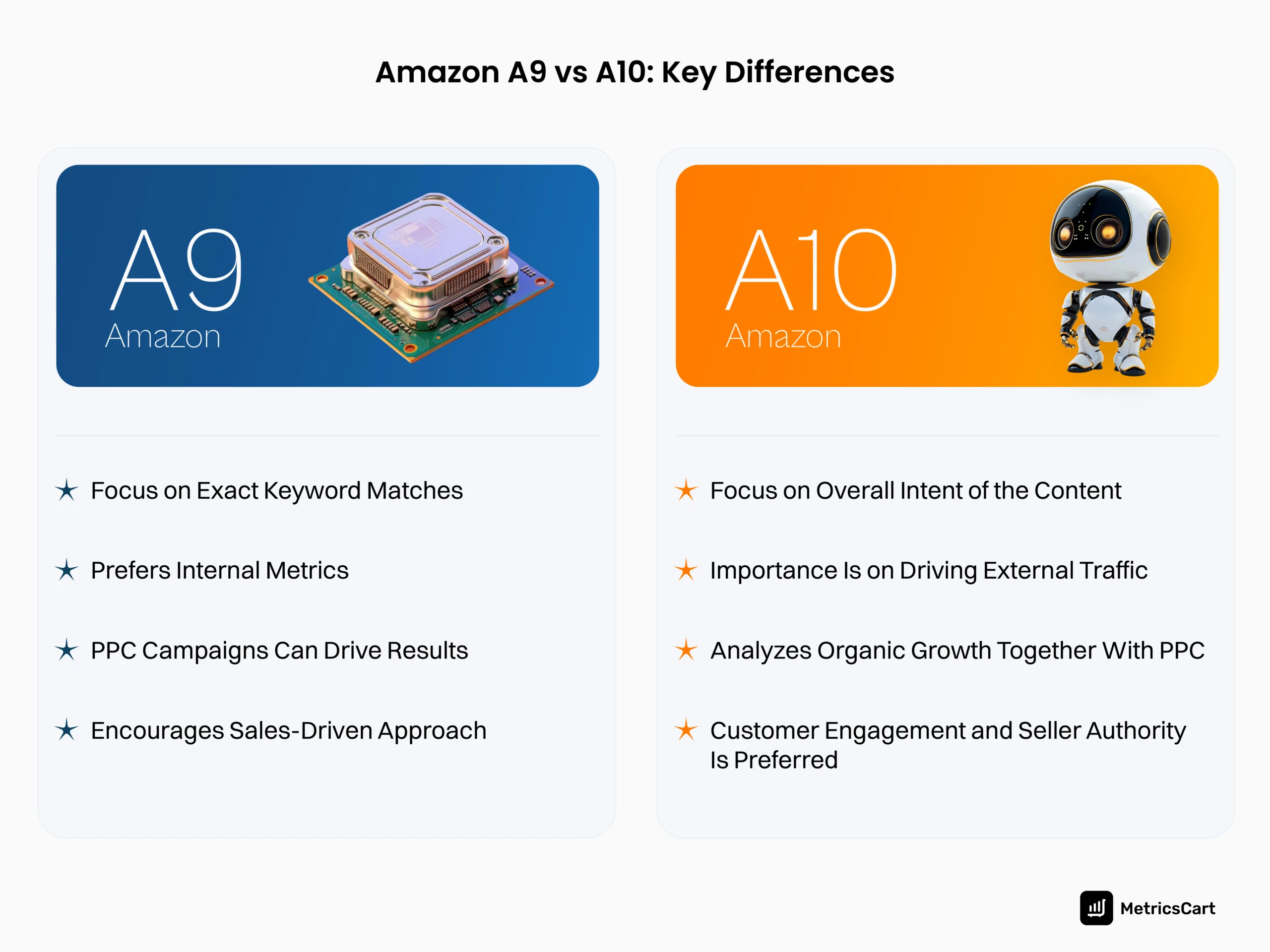
From Keywords to Intent
The old algorithm relied heavily on exact keyword matches. If your product title or description didn’t include the exact search terms, you were out of luck.
Now, it’s not just about the keywords; it’s about the overall relevance of your product to what the customer is looking for. This includes keywords but also considers things like reviews and additional listing content.
You need to think beyond stuffing keywords into your listing. Focus on creating descriptions that genuinely address customer needs and include secondary keywords naturally.
From Internal Metrics to External Traffic
The Amazon A9 algorithm phase was all about what happened on Amazon, such as sales history, conversions, and pricing.
Now, Amazon cares about how much buzz your product is generating off-platform. Are people coming to your page from Instagram? Did a blogger link to your product? That matters now.
Get active outside of Amazon. Use social media, influencer collaborations, and content marketing to drive traffic to your listings.
From PPC Dominance to Organic Growth
Earlier, paid ads were the go-to strategy. PPC campaigns often guaranteed higher rankings, even if your organic sales weren’t great.
While ads still help, they’re not the deciding factor. A10 focuses more on organic sales and authentic customer engagement.
Invest in building a solid product listing and focus on driving organic traffic and sales. PPC can still be a tool, but it’s no longer the magic bullet it used to be.
From Basic Seller Metrics to Full Authority
Amazon seller metrics like shipping time and order defect rates were essential but not game-changing.
Seller authority now plays a more prominent role. Amazon looks at your history, feedback ratings, and how well you handle customer service issues.
Build your reputation as a trustworthy seller. Provide excellent service, use FBA if possible, and encourage positive feedback from your customers.
From Sales-Driven Rankings to Engagement Metrics
During the time of the A9 algorithm, if your product sold well, you ranked higher. It’s as simple as that.
Even now, with Amazon A10 algorithm, sales are significant, but the new Amazon search algorithm also looks at how customers interact with your listing. Are they clicking? Spending time reading the details? Watching your product video?
All these factors make a difference in the way the A10 algorithm would prefer your product listings over others. Digital shelf optimization is not just an option but an absolute necessity for smaller and big brands alike.
Create listings that grab attention and keep customers interested. High-quality images, detailed descriptions, and engaging videos can make a big difference.
READ MORE | Want to boost your organic rankings on Amazon? Check out our blog on How to Rank on Amazon: 7 Essential Tips for Organic Success.
Securing the A+ Rank on A10
To secure the coveted A+ rank on Amazon, you need to focus on creating exceptional customer experiences and aligning your strategies with the algorithm’s key priorities.
Start by optimizing your product listings with clear, engaging titles and descriptions that include relevant keywords. Use Amazon A+ Content tools to design visually compelling pages with high-quality images, comparison charts, and detailed product information.
Drive consistent organic sales by offering promotions, Amazon virtual bundles, and cross-selling opportunities to increase average order value. External traffic plays a significant role under A10, so advertise your listings on social media, collaborate with influencers, and direct traffic through blogs and ads.
Focus on engagement metrics by improving click-through rates, keeping customers on your page longer with videos and FAQs, and responding to inquiries promptly. Regularly monitor your performance metrics, test different digital shelf strategies, and adapt to changes in the algorithm.
Conclusion
Amazon’s A10 algorithm is a game-changer for sellers, putting more weight on relevance, engagement, and external traffic. It’s no longer just about hitting the right keywords or running ads; it’s about creating a shopping experience that meets customers where they are.
If you want to succeed with A10, think of it as a holistic approach. Optimize your listings for customer intent, drive traffic from outside Amazon, and build trust as a seller. The more you align with A10’s focus on customer experience, the better your chances of dominating the digital shelf.
So, are you ready to adapt and thrive in the A10 era? Start implementing these strategies today, and watch your rankings and sales soar.Navigating the Amazon A10 algorithm can be tricky, especially for new brands. Digital shelf analytics software can help you create customized strategies and insights to optimize your brand listings and boost sales.
Step up Your Brand Game and Outshine Competitors!
FAQ
The A10 algorithm builds upon A9 by incorporating additional factors such as external traffic, user engagement metrics, and seller authority, providing a more comprehensive approach to product ranking.
The A10 algorithm evaluates user engagement metrics such as click-through rates, time spent on product pages, and overall interaction, impacting product rankings.
Seller authority, determined by factors like feedback ratings, tenure on Amazon, and return handling efficiency, is more influential in the A10 algorithm compared to the A9.
The A10 algorithm utilizes advanced natural language processing to better interpret and respond to specific, less common long-tail queries, improving search result relevance.
The A10 algorithm’s focus on external traffic and seller authority can present challenges for small brands with limited resources, as they may struggle to compete with larger brands in these areas.

